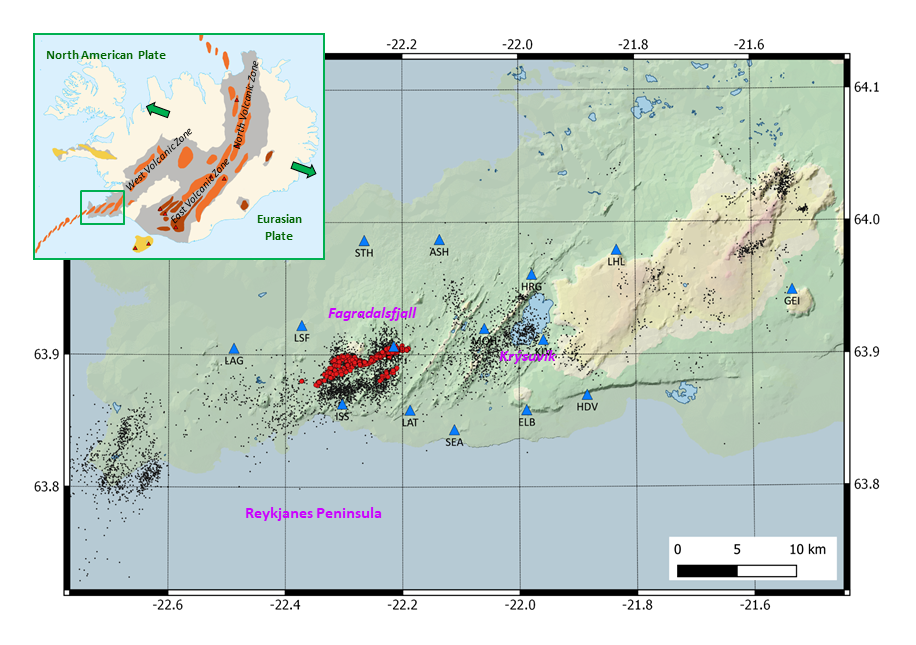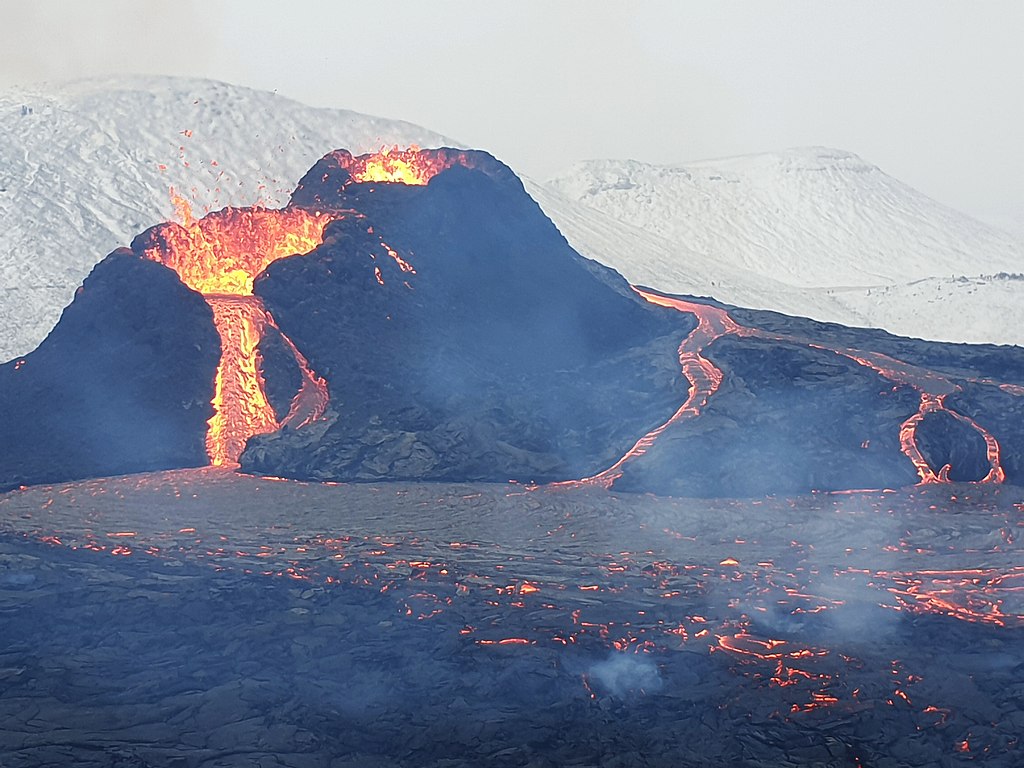Iceland is one of the most significant geodynamic areas in the world since it is the only part of the Mid-Atlantic Ridge, the boundary between the North-American and Eurasian tectonic plates, exposed above sea level. As such, it represents unique opportunity to observe and study phenomena at the diverging tectonic plates. The Fagradalsfjall volcano is located at the Reykjanes Peninsula, the most seismically active part of Iceland. Weak earthquakes with local magnitudes ML < 3.0 (usually several events per day) prevail and are accompanied by seismic swarms, sequences of mostly small earthquakes with no identifiable mainshock. It is the place where, in 2013, the Institute of Geophysics together with the Institute of Rock Structure and Mechanics CAS established the seismic network REYKJANET.
Fig. 1. North Atlantic rift zone at the Reykjanes Peninsula in SW Iceland showing seismic activity of the 2017 swarm (red dots) detected by the REYKJANET network stations (blue triangles). The arrows indicate divergent rift movements.
The study published in the Earth and Planetary Science Letters focuses on the interpretation of seismic activity in 2017 at the Reykjanes Peninsula, SW Iceland, which preceded current eruption of the Fagradalsfjall volcano. Due to its attractive topic, the results of this study were also highlighted in the Nature Reviews Earth & Environment journal.
Fig. 2. Volcano Fagradalsfjall (photo: Berserkur, WikiCommons)
The analysis of the 2017 earthquake swarm revealed the most frequent focal mechanisms corresponding to the main activated fault, which relates to transform faulting of the North Atlantic Rift. Detailed analysis indicated the activation of different fault segments and revealed the interactions between tectonic and magmatic processes. The work is quite relevant, since it identified an emerging vertical magmatic dike at the place of current Fagradalsfjall eruption initiated in March 2021.



